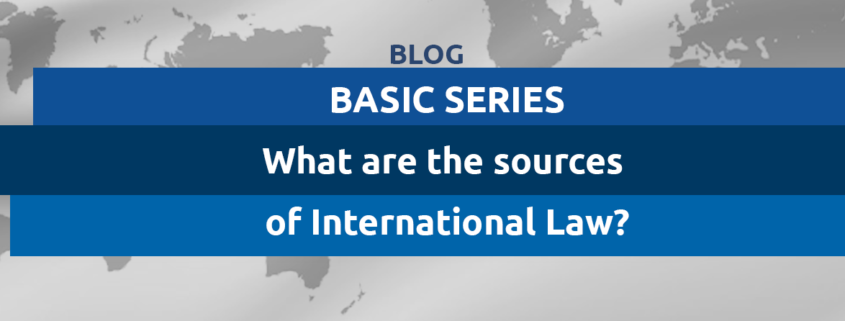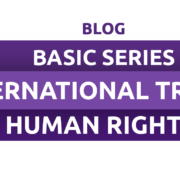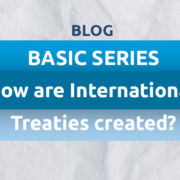What are the sources of International Law?
International law goes through the boundaries of States, creating a system of legal norms that regulate the relations between nations. The sources of International Law are what determines of which means come or that might come the legal norms, that is, what composes this Law. For most authors on the theme, the sources are divided into material and formal.
The material sources are the content of the legal norm, they determine how a legal norm will be elaborated. Sociological, economic, psychological and cultural factors lead to a decision that later will be formalized in other sources of International Law. The material sources refer to these decisions.
The formal sources are the methods and processes of creating legal norms. They are mentioned in article 38 of the Statute of the International Court of Justice:
“1. The Court, whose function is to decide in accordance with international law such disputes as are submitted to it, shall apply:
- international conventions, whether general or particular, establishing rules expressly recognized by the contesting states;
- international custom, as evidence of a general practice accepted as law;
- the general principles of law recognized by civilized nations;
- subject to the provisions of Article 59, judicial decisions and the teachings of the most highly qualified publicists of the various nations, as subsidiary means for the determination of rules of law.
- This provision shall not prejudice the power of the Court to decide a case ex aequo et bono, if the parties agree thereto.
Article 38 doesn’t have the objective of being exhaustive. In it, the sources of International Law are just exemplified. Furthermore, the Statute doesn’t set a hierarchical level between the sources, that is, there is no hierarchical degree between the sources of International Law Below, you can see which are the formal sources expressed in article 38.
International Treaties
We have already talked about international treaties in our blog. In general, international treaties are the main source of International Law. For the validation of a treaty, it is necessary the direct and democratic participation of the involved States. They are direct, clear and easy validation source because it is necessary its written and ratified (signed) documentation by all States that compromise to adhere to its rules.
International Customs
The international customs are general practices accepted as a law. They are the second major formal source and, historically, the older. For the formation of a custom, two elements are required: the material, generalized repetition of certain acts, and the psychological, the conviction that such acts are practiced by obligation. The customs must be proved so that they are valid.
General Principles of Law
The general principles of Law are sources hard of identifying and many have already been agreed to in treaties or are already considered as customs. The principles are norms that derive from National Law or Domestic Law and are accepted in the international order. We can consider, for example, the principles of good faith, protection of trust and acquired rights as general principles of Law.
Auxiliary means and New sources
Besides the main sources, the International Law also has as sources judiciary decisions and publicist doctrines. They are called “new sources” or “auxiliary means”. We can mention:
- jurisprudence – interpretations made by the courts that end up by determining a norm. They are considered as auxiliary means because new norms can’t be created by them, they only register the interpretations of the law.
- publicists doctrine – publicists are the ones that are versed in public law. Since they are skilled for such, their interpretations of the law can also be considered auxiliary means just as the jurisprudence.
- analogy and equity – come into play as auxiliary means in case of a lack of legal norm for a certain case. It has the objective of coming up with the fairest decision on conflicts of interests. The analogy is the application of a legal norm made to serve another similar case, while the equity takes place when there is no legal norm capable of reaching the particular case.
- erga omnes – obligations imposed on everyone, regardless of assent. It has the objective of preserving international fundamental values
- jus cogens – a set of norms that overlap the autonomy of the States’ willingness. They are hierarchically superior to the conventional norms, and can’t be repealed by treaties or customs. Among them are the prohibition of aggression, genocide and slavery.







Trackbacks & Pingbacks
[…] treaties are one of the sources of the International Law prescribed in Article 38 of the Statute of the International Court of Justice and regulated in the […]
Leave a Reply
Want to join the discussion?Feel free to contribute!